The needle catfish (Farlowella) are whimsical representatives of the loricariid catfishes (Loricariidae), reminiscent of sticks. They graze on fine growth with their typical sucking mouth. They are usually common animals in the wild, which is why they attracted the attention of scientists early on. The first species was described in 1853 (F. acus), the last for the time being in 2023 (F. wuyjugu). All in all, 51 described species are currently assigned to this genus. How many of these are valid, however, is disputed. This is due to the fact that many Farlowella species look quite generalized. The measurements used to distinguish species – e.g. length of the snout process (rostrum) in the body length and the like – often prove to be inapplicable. These things are too variable, as we know today. That is why publications about Farlowella are very often accompanied by question marks regarding the naming of the species. This applies to both scientific and, to an even greater extent, popular publications. Farlowella species usually grow to a length of 12-18 cm.
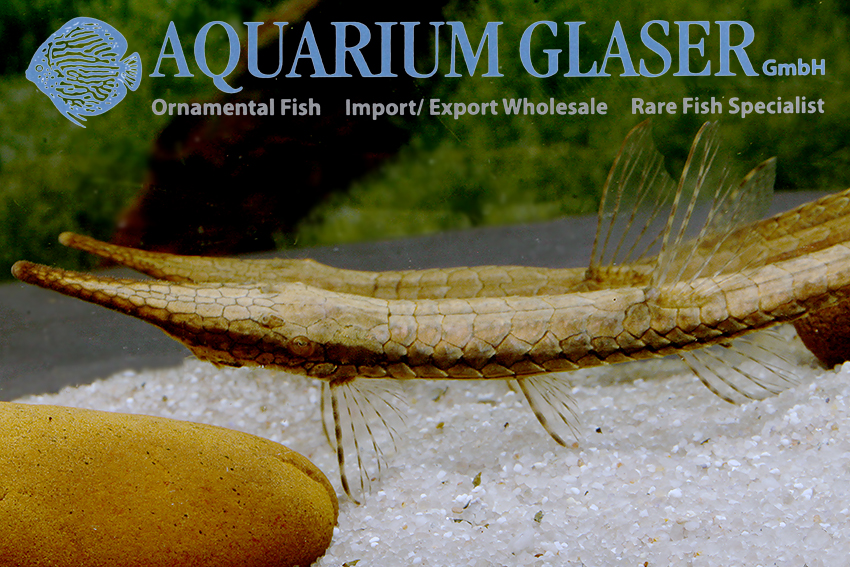
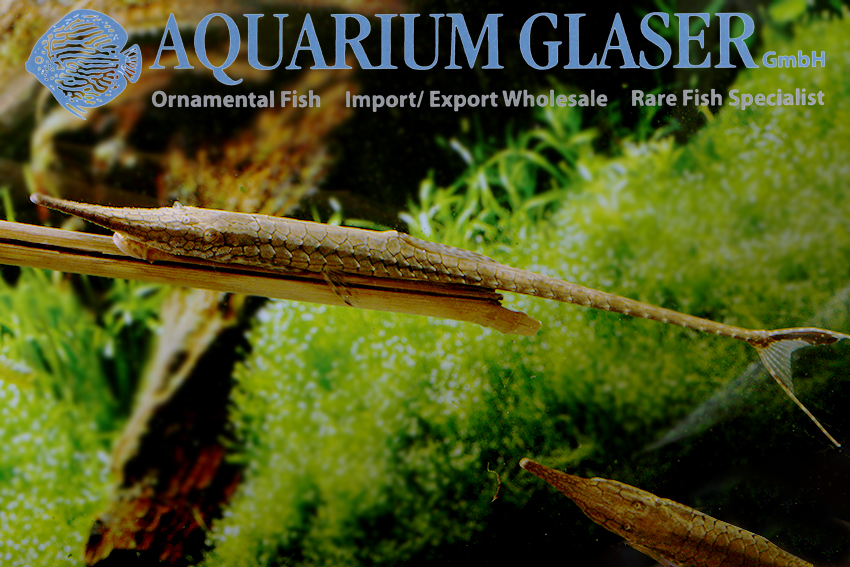
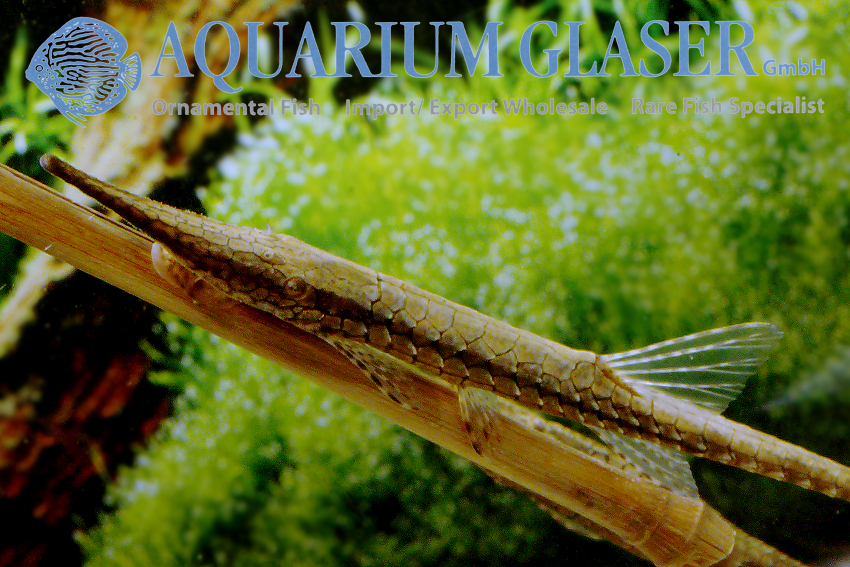
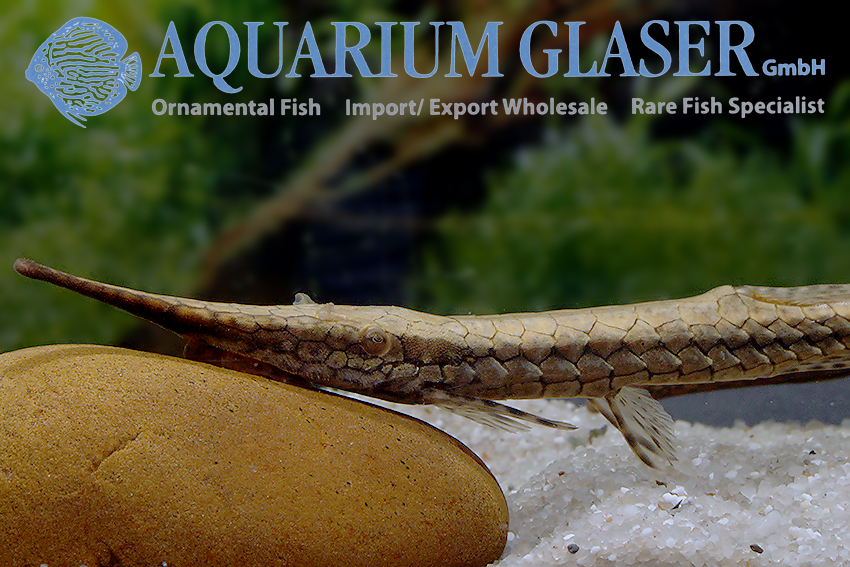
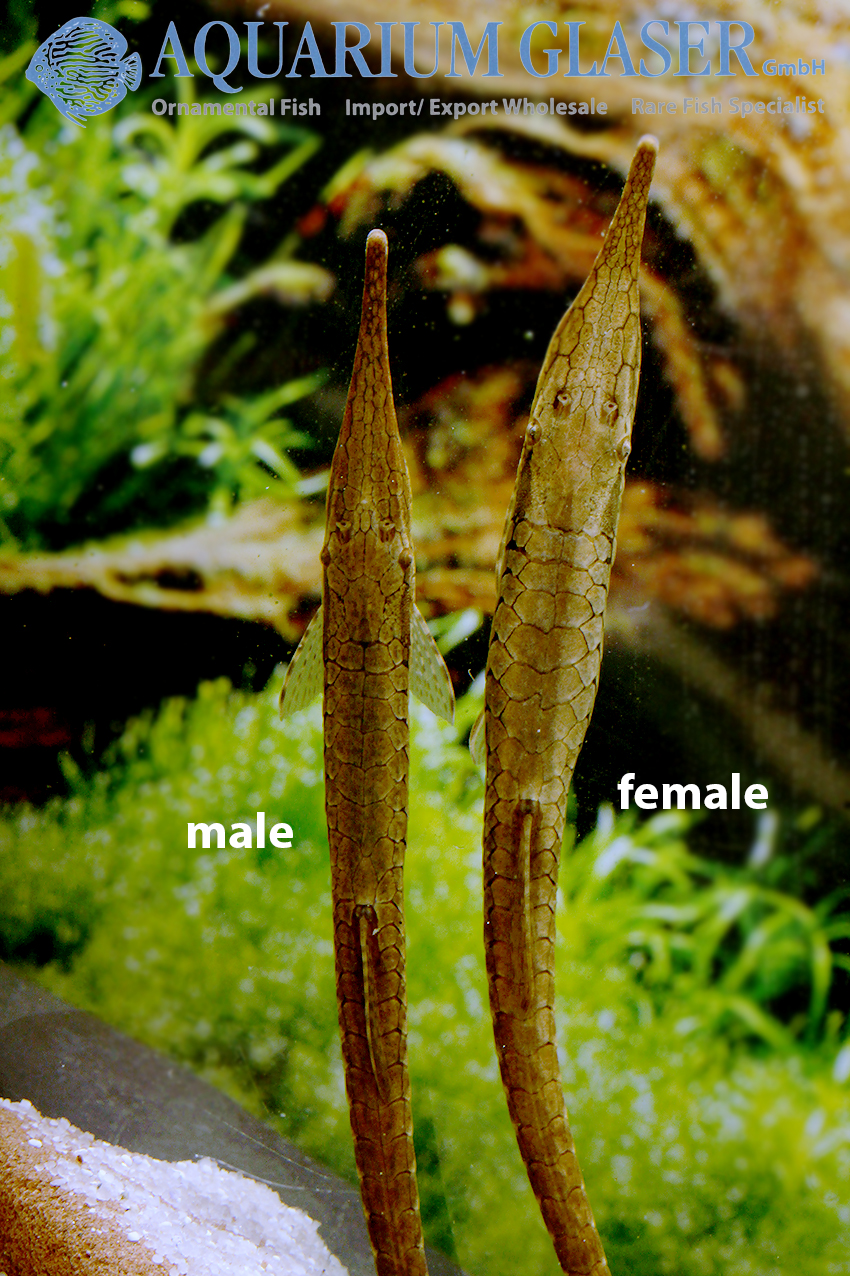
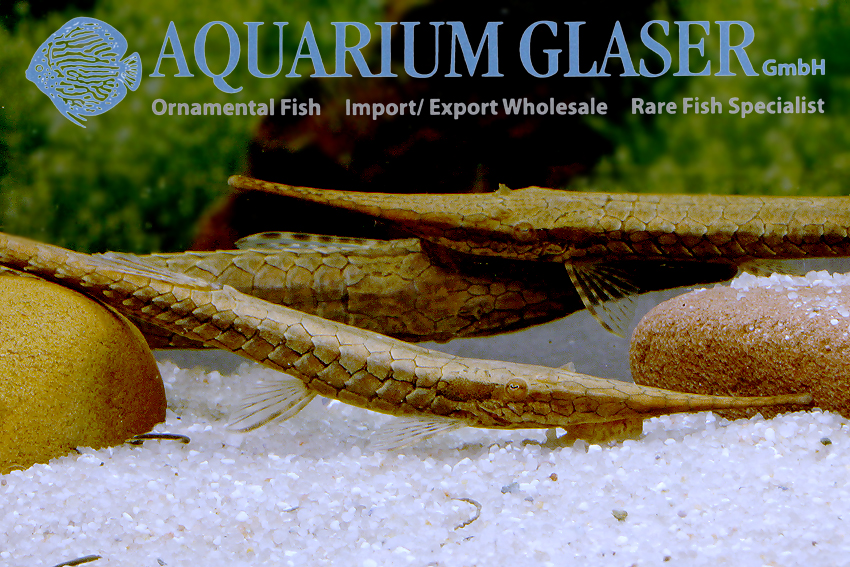
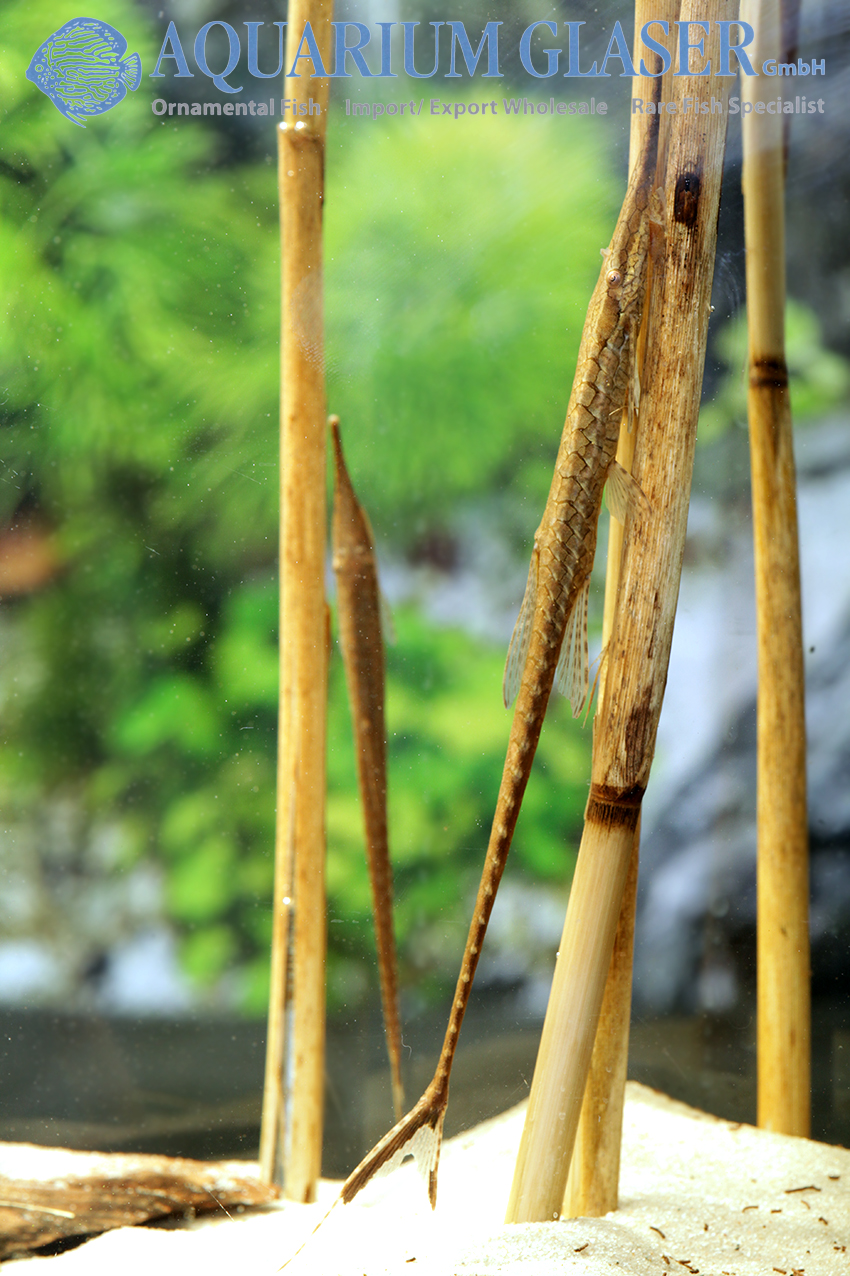
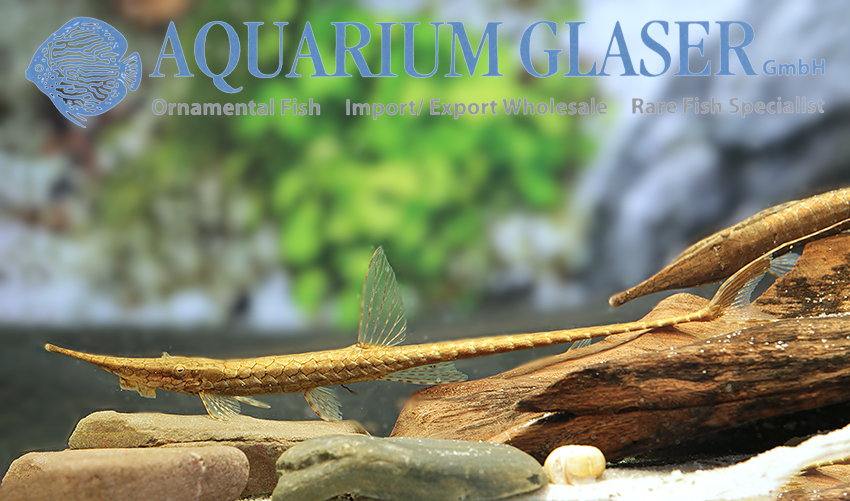
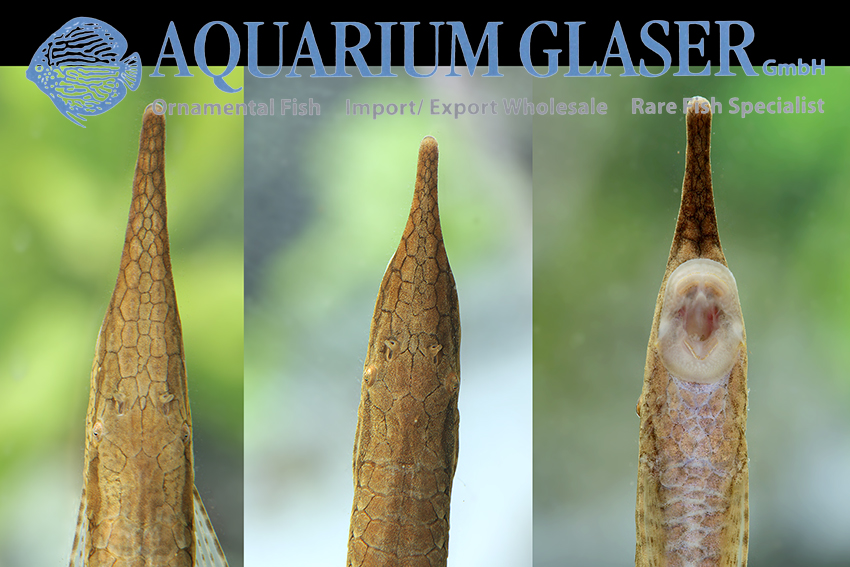
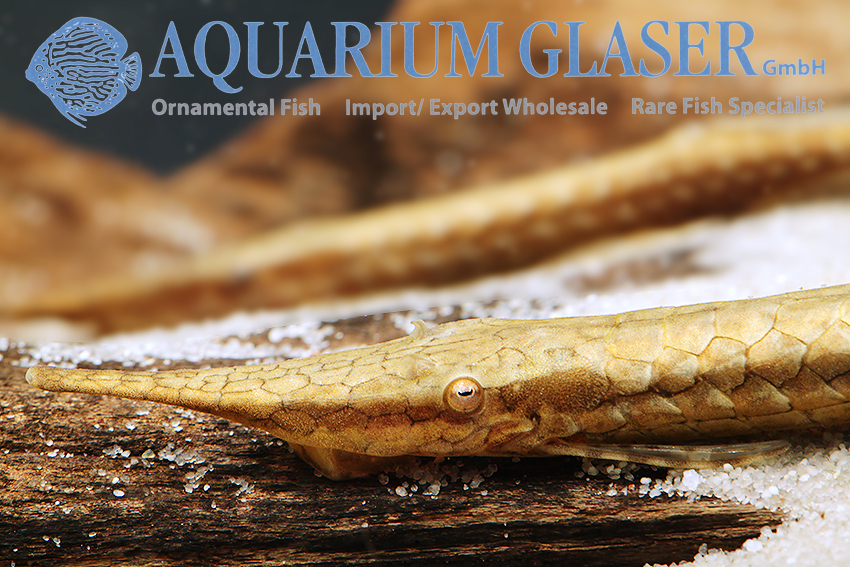
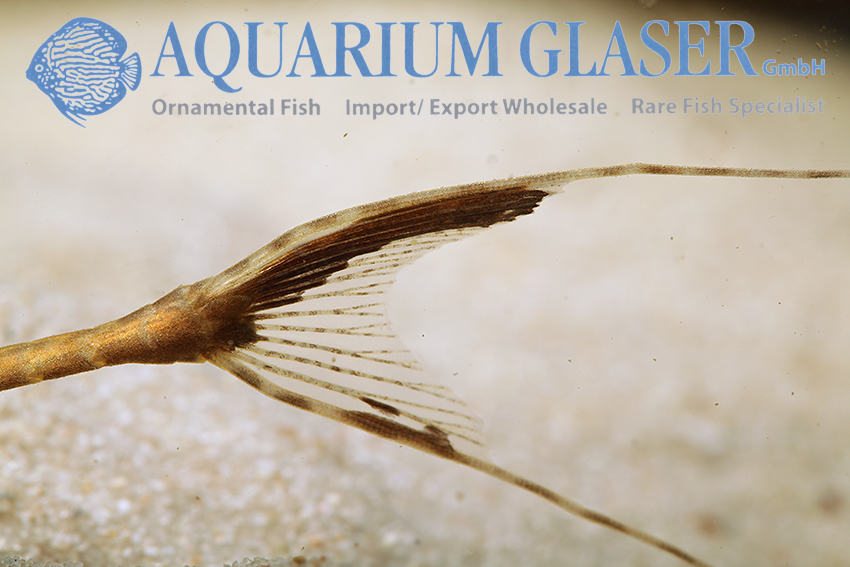
From time to time we receive very attractive Farlowella from Paraguay. There are five species in the region (characterized by the large rivers Paraná and Paraguay): F. jauruensis, F. hahni, F. isbruckeri, F. paraguayensis and F. azpelicuetae. The first species (F. jauruensis) has a pattern of markings that is clearly different from all other species. Viewed from above, the rostrum is dark colored (vs. light or with a reticulated pattern). This species, previously only known from the upper reaches of the Rio Paraguay, is therefore by no means identical to our species. The pattern on the caudal fin of our imports is particularly striking and typical of the species. The upper caudal fin lobe is either completely dark or at least half dark in color. The dark coloration continues into the base of the lower caudal fin lobe. This excludes F. azpelicuetae and F. isbruckeri, which only have two dark stripes in the upper and lower half of the caudal fin. Our imports differ from F. paraguayensis by the clearly and strongly pronounced net pattern in the head area (missing in F. paraguayensis). The only remaining possibilities are therefore that our fish are F. hahni or an as yet undescribed species.
Species identification is not unimportant for two reasons: firstly, the care conditions of a southern species from the Paraná-Paraguay region differ in terms of seasonal temperature development – it can be quite cool here at times. And secondly, you need to be sure which species characteristics need to be taken into account when putting together breeding groups.
Otherwise, the various Farlowella species hardly differ in their care requirements. They require clean water with as few germs as possible and a good current, while the hardness and pH value are irrelevant for their care. The greatest difficulty in keeping Farlowella species lies in feeding them sufficiently. They are slow eaters that must not have any food competition in the aquarium. The growth – i.e. fine algae and the small creatures it contains – is not sufficient to feed them under aquarium conditions. Nevertheless, as much dead wood, dead leaves, reed and bamboo stems etc. as possible should be introduced into a Farlowella aquarium. Farlowella will not swim unnecessarily, so it is not important to ensure that there is free swimming space. On the other hand, the somewhat stiff and clumsy animals can become hopelessly entangled in filamentous algae or dense tufts of aquatic plants. This should therefore not be allowed in the Farlowella aquarium. Food tablets are an excellent basic food, along with fine frozen food (e.g. Cyclops) or Artemia. Vegetable pieces (zucchini is well suited, not so well potatoes or carrots. They contain a lot of sugar and quickly spoil the water) and crushed frozen peas complete the food plan. If everything goes well, breeding Farlowella is not very difficult. Like Sturisoma and Sturisomatichthys, they spawn on open surfaces (preferably an aquarium pane), the male guards the spawn until the fry hatch. The sexes of Farlowella are not easy to distinguish. The females are fuller, old males develop bristles (odontodes) on the rostrum.
For our customers: the animals have code 253662 on our stocklist. Please note that we only supply the wholesale trade.
Text & photos: Frank Schäfer




